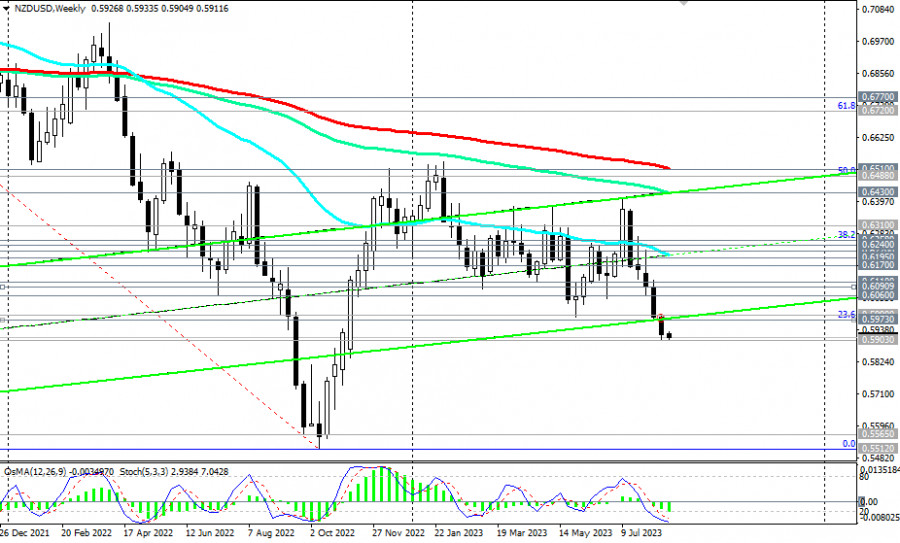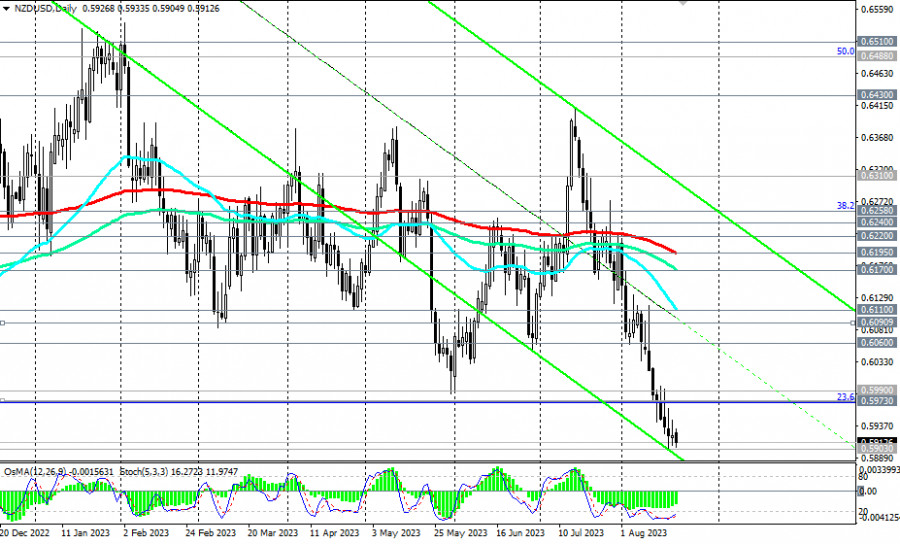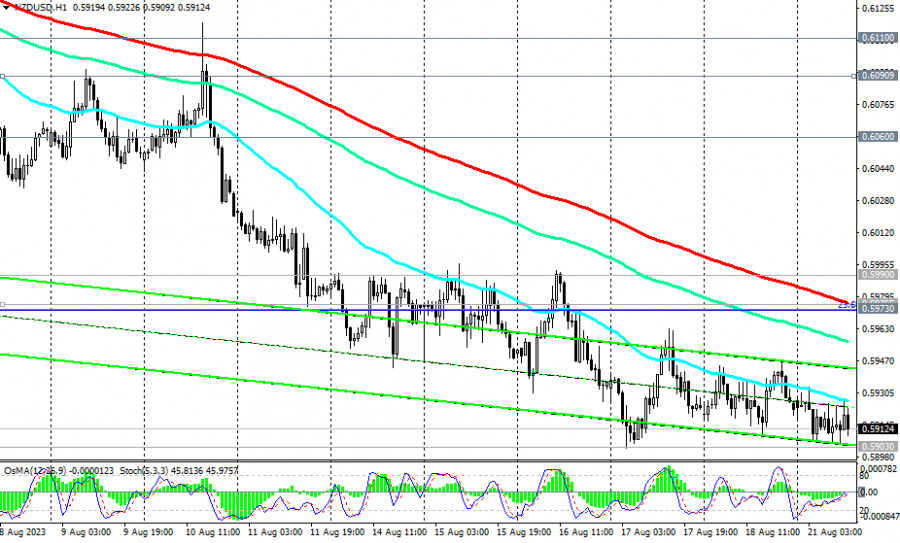

Traders who follow the dynamics of the New Zealand and U.S. dollars are focused on the results of the recent meetings of the RBNZ and the Fed. While the leaders of the U.S. central bank tend to tighten policy further, the RBNZ has announced its readiness to pause interest rate hikes for now. This, as well as disappointing macro statistics from China, is putting downward pressure on the NZD/USD pair, which is trading at nine-month lows.
In our previous review, we noted that, in the main scenario, after breaking below the local support level of 0.6060, we expect a further decline in the pair with immediate targets at support levels of 0.6000, 0.5975 (23.6% Fibonacci level in the pair's decline from 0.7465 in February 2021 to 0.5510 reached in October 2022). As we can see, the scenario was fully realized.

Last week, the pair dropped to 0.5903, and today attempted to break through it. In case of a break below, it will be a signal to increase short positions with distant targets located near local multi-year lows and levels of 0.5565, 0.5510.
In the alternative scenario, the fastest signal for resuming long positions could be the breakout of the resistance level at 0.5927 (200 EMA on the 15-minute chart) and Friday's high of 0.5947, with confirmation coming from the breakout of resistance levels at 0.5973 (23.6% Fibonacci level), 0.5975 (200 EMA on the 1-hour chart), and 0.5990 (local resistance level).

From a technical point of view, NZD/USD is trading in a bearish market zone, short-term and medium-term—below the resistance level of 0.6195 (200 EMA on the daily chart and 50 EMA on the weekly chart), long-term—below the resistance levels of 0.6430 (144 EMA on the weekly chart), 0.6500, 0.6510 (200 EMA on the weekly chart).
Technical indicators OsMA and Stochastic on the daily and weekly charts are also on the sellers' side, indicating the appropriateness of short positions.
In the main scenario, after breaking below the local support level of 0.59000, further decline can be expected.
Support levels: 0.5900, 0.5800, 0.5700, 0.5600, 0.5565, 0.5510
Resistance levels: 0.5927, 0.5947, 0.5973, 0.5975, 0.5990, 0.6060, 0.6090, 0.6110, 0.6170, 0.6195, 0.6200, 0.6220, 0.6240, 0.6258, 0.6310, 0.6430, 0.6488, 0.6500, 0.6510